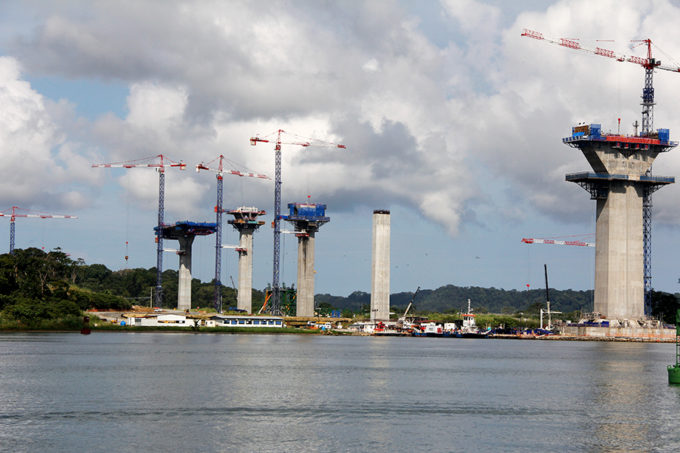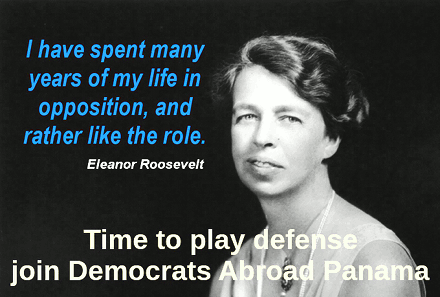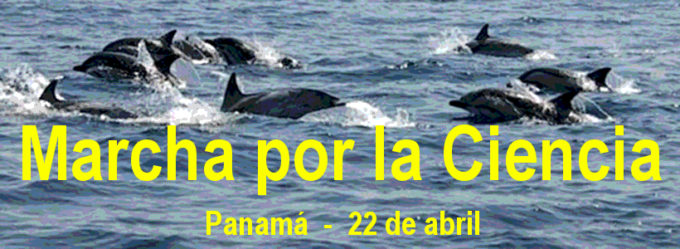
What the ACP says, doesn’t say, and ignores
by Eric Jackson
The Panama Canal Authority’s (ACP’s) information control game was set up during the Panama Canal’s transition from US to Panamanian administration, under the direction of one Ricardo Martinelli Berrocal, then Minister of Canal Affairs, later President of the Republic of Panama, now a criminal fugitive being harbored by the United States government in Miami. It has not changed very much over the years. Its main features include:
- Ferocious attacks on Panama Canal employees’ unions and a relentless if not so effective effort find or better yet prevent any whistle blowers;
- A cozy relationship with the corporate mainstream media based primarily on family and business ties with their owners and managers, and also on the exchange of access for obedient reporting;
- The breaking of major, controversial or dubious stories through foreign media, whose reporters will neither bring up questions of importance to Panamanians that would not occur to people who have not followed Panamanian realities nor question assertions that any self-respecting Panamanian journalist would not let pass unchallenged;
- A presumption that Panamanians have no history and no memory;
- The principle that conflicts of interest are not news, and moreover that because of the lack of any comprehensive Panamanian law on the subject, don’t exist and can’t exist; and
- A fraud artist’s calculation that suckers — including a whole nation or even the whole world — can’t figure out basic incongruities in a business pitch.
Panama has seen all of that in recent days.
On March 28 La Prensa ran a gushy little ACP press release story about how construction of the new bridge over the Atlantic entrance to the canal is 56.5 percent complete, and that the project will cost $570 million.
Back when the canal expansion project was first announced in 2006, two things jumped out from the ACP’s first charts that called their financial projections sharply into question, although the mainstream media had been bought off with huge “Yes” campaign advertising buys so did not see fit to mention those.
On the revenue side, there was the projection that the growth in US imports from China would grow at the rate of increase that was seen between 2000 and 2005 through at least 2025. Not a series of straight ascending lines as in growth from month-to-month or year-to-year, but an ever-steeper upward curve based on how fast the increase was progressing at the start of this century. But those numbers would, when compared to economic reality, mean that the United States would export all of its industrial production to China and still have money to buy things on the world economy as if no economic disaster struck. So it was immediately apparent that the ACP’s revenue projections were spurious. Those projections failed even before the 2008 worldwide financial crash.
The second dead giveaway was on the project’s expenditure side. The new locks would cut off Colon’s Costa Abajo — that part of the province west of the canal, from Piña to Miguel de La Borda and beyond — from road access to the rest of the country. So where was the bridge or tunnel connection that would necessarily be a part of the canal expansion project? It wasn’t there. As in, an expenditure that would run into hundreds of millions of dollars not included in the price tag advertised by the ACP. And who did that schematic anyway? It was Parsons Brinckerhoff of Boston Big Dig notoriety, a road tunnel project that cost much more than had been advertised to the general public and to state and federal agencies, in which the main trick that was played was putting major necessary components of the job “off the project” and thus out of the calculations.
Add more than half a billion dollars to the canal expansion price with this bridge. That’s about 40 percent more than the bridge project cost had been placed at a few years ago, but set that aside ad a minor frill. The ACP compartmentalized the canal expansion project so as to understate its cost.
But then there are non-financial costs as well. Like the death of a straw man.
On October 16 the National Assembly published an article on their website, wherein they proclaimed the “Third Bridge over the Canal, without cracks and 52 percent done.” As in, two legislative committees visiting the construction site as a part of their oversight role. The lead paragraph concluded that the committees “found no cracks in the structures, as reported.” But WHO reported that? WHERE was it reported? The source of said alleged allegation is unspecified by the legislature’s website, no such claim is recalled by this reporter and none of that information can be found online by a Google search. Maybe someone said something somewhere, but by every appearance politicians seeking to curry favor with the ACP set up and killed a straw man.
But look at the number the legislators’ report cited, and the date. The project was 52 percent done in the middle of last October. Five months later, as the dry season approaches its end, La Prensa, with its unspecified but obviously ACP source, reports that the bridge is 56.5 percent done. There could be some interesting questions based on those two numbers, but ever since 2006 when this reporter declined to be an unpaid acolyte during the referendum campaign the ACP does not answer questions from this direction.
Fallout from the failed Port of Corozal bidding
The proposed new seaport at Diablo and Corozal has run into fierce opposition from several quarters. The ACP evicted the Diablo boat shed owners, calling them “squatters” and accusing them of various illegal activities. Litigation over whether the ousted people will be compensated and how much is pending and will surely continue for years to come. The canal pilots say that a port in that particular spot is a traffic hazard for ships going into and out of the Miraflores Locks. The legislature has been divided into factions backing various contenders — who came and went — for that private port concession. (At one point the big hue and cry was against the Motta family, which had allegedly rigged the process in their favor. But then the company in which they hold a stake was eliminated from the bidding process by a change in the prerequisites for bidders.) It came down to four remaining contenders who ere allowed to bid for the concession, the day to submit bids came — and nobody put in a bid.
The ACP won’t say whether they will continue with the Corozal port project. There are rumors of price reductions so that Panama gains nothing in taxes or shared revenues, but the project goes. The international consensus is that world shipping is in a bad way and that although it may be picking up in some segments it’s a risky investment at this point.
But from ACP circles there now comes “an alternative truth.” The Corozal ports project was set back not because the economics are bad for it at this time, but because a former PanCanal vice president for planning, Rodolfo Sabonge, leaked a confidential ACP feasibility study to Carlos Urrutia, an executive for one of the companies looking at bidding on the port concession. This version has burst upon the public thanks to the effort of ACP board member Lourdes Castillo, who has clashed with Sabonge before.
PanCanal’s inspector general and top officials beg off from comment, saying that it’s a metter under investigation, or that will be investigated.
But there is a big problem here. Sabonge retired from the ACP in 2013. The alleged leak took place no later than three and a half years ago. If one possible bidder was warned off by confidential information from within the ACP, all of the other potential bidders figured out the same stuff on their own anyway, and declined to bid.
There appears to be an even bigger implicit problem. Did someone see an internal document that indicated that something that the ACP was selling really wasn’t such a profitable deal? As in, Sabonge’s alleged offense was spilling the beans on a business deception? As in, the prevailing business model at the Panama Canal Authority is a culture of fraud, of the concealment of material information from potential business partners?
Why Corozal? The imperfectly concealed explanation
One issue that PanCanal unions have brought up is more serious, and what they point out contains the seeds of understanding why the ACP persisted, and it may still persist, in pumping a Corozal project that almost all independent, informed and astute observers think to be a turkey. It comes from a 2015 article in the Mexican edition of the business publication Forbes, in a feature about one of the wealthiest men in Panama, ACP board member Alberto Vallarino. It’s good business journalism, even if Vallarino gives some self-serving accounts of Panamanian business and political history in the article. Of immediate importance here is one paragraph:
Logistics is another of the sectors where his business is betting. There he wants to enter into activities related to transportation. To do this, he acquired a 60-hectare lot southwest of the city, in the reverted areas near what will be the new Panamanian Pacific port of Corozal.
There are other possible explanations, which could be shrouded in ACP secrecy like perhaps a recusal in a process that has never been publicized. But at first glance we are looking at a major league conflict of interest. Depending on the circumstances of when, how and why Vallarino acquired that property, we may be looking at insider trading.
Tugboat privatization
The Pänama Canal unions, the tugboat skippers and pilots in particular, alleged that the Panama Canal Authority was planning to privatize canal tugboat services. The allegation is long-standing. In the middle of March, the canal unions again made the charge, this time by pointing out that the ACP had not made the orders to purchase sufficient tugs to do the work and to a proposal that they had seen which suggested a change in work rules to allow the use of contracted private tugs. The ACP immediately denied it, issuing a vitriolic response that questioned the labor activists’ honesty. Two days later, at a business gathering, a private tug company announced its order of new tugs to provide services to the Panama Canal Authority. The company said that the ACP had awarded it the private tug contract in 2016. The ACP management issued no clarification or apology.
Preparing to cede the west bank of the Panama Canal to China
Article 3 of the Panamanian Constitution provides that:
The national territory can never be ceded, transferred or alienated, temporarily or partially, to other states.
That was one of the very first things that came up in a 1972 convention of the representantes chosen in the 1968 elections, assembled by General Omar Torrijos and his colleagues to give a fig leaf of constitutionality to their military dictatorship. The treaties that ultimately gave the canal and the Canal Zone to Panama were some years in the future but that constitutional provision, like those treaties, was a fundamental political requirement. It was neither some drafter’s intellectual whim nor some strongman’s demagogic promise. It was a national aspiration that burned in the hearts of Panamanians, something for which people had died. Without that section Torrijos could not have had his contsitution ratified.
That military constitution, with a few amendments, is still in effect in Panama.
But much has changed. The former American enclave reverted to Panama, which had only briefly held formal title for a few days between independence from Colombia and the Hay-Buneau-Varilla Treaty that established the Canal Zone. The Cold War ended. Globalization on corporate terms, including the widespread privatization of public assets, swept around most of the planet. The public property of the Soviet Union became the private property of Russian oligarchs, who under the leadership of Vladimir Putin blurred the distinction between the Kremlin’s public sphere and the activities of privatized — that is, stolen — fortunes. The people whom Chairman Mao reviled as “capitalist roaders” gained control of the Chinese Communist Party and the Peoples Republic of China after Mao died, and they also blurred the distinctions between public and private property and their respective functions.
And now the Panama Canal Authority, stung by the business world’s rejection of their Corozal project and still looking for new sources of revenue in light of their failed financial projections for the canal expansion, are looking to another plan.
They didn’t lay this out directly to any Panamanian news medium. To do that would risk questions from a reporter about the plan’s propriety under the Panamanian Constitution. No, the ACP went back to an old page in the playbook and released this one through Reuters journalists in Shanghai on the occasion of ACP administrator Jorge Quijano’s visit there. So on March 28 those of us who pay attention read of exploratory talks to concede parts of the former Empire and Balboa firing ranges on the western bank of the Panama Canal, a parcel of some 1,200 hectares, to three state-controlled and partially state-owned Chinese corporations, the China Communications Construction Corporation, its subsidiary the China Harbour Engineering Company and a separate firm, the China Railway Group.
There will be quibbling about what it means to cede or alientate, or transfer. Lawyers will make their stands about what’s a “state.” “Temporarily” and “partially” will no doubt be parsed into a meaningless twilight zone. But Quijano didn’t try to pull this on any worthy Panamanian reporter.
~ ~ ~
These announcements are interactive. Click on them for more information.
Back whe











